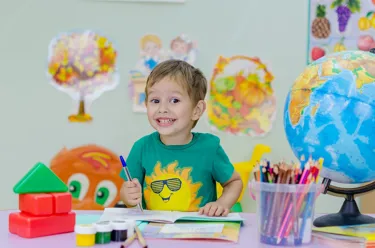How to Reduce Your Carbon Footprint at School
- Wednesday 6th February 2019
- Conservation

Global warming, carbon footprints, being green, these are all terms we hear a lot about these days. But, perhaps many of us don’t know enough about these issues as we should. In order to ensure a healthy future for our Earth, it is important to educate children as early as possible about the impact of climate change and how they can act now to start reducing their own carbon footprint. So, we’ve put together a list of ways in which you can start educating them on how they can help to reduce carbon emissions at school, today.
First things first, what is a carbon footprint?
When we refer to a person’s carbon footprint, we are referring to the amount of greenhouse gases that an individual is responsible for. For example, driving a car, heating your house, the production of the foods you eat or the goods you buy. All of these activities require energy and most of that energy comes from burning fuel. Burning fuel produces greenhouse gases which end up in our atmosphere and is causing the temperature of the earth rise - this is commonly known as global warming. Keep reading for our list of ways to reduce your carbon footprint at school.
Shutdown and unplug
A computer can use up to 65% more energy when it is left on, so make sure they are powered down completely at the end of each use. Even when electronics are powered down they can still be using energy. Switch off at the wall or unplugging altogether will stop all energy usage from electonics. Using a power board will easily allow you to unplug multiple electronics when not in use.
Climate control
If you’re using an air conditioner or heater to cool or heat your classroom, make sure all of the windows are completely closed. If some fresh air is needed, make sure the air conditioner or heater is turned off before you open up the room.
Change your bulbs
Switching from fluorescent to LED bulbs will reduce power usage. LED bulbs have around 50,000 hours of lamp life compared to fluorescent which only have around 20,000 hours AND only use half the power consumption.
Turn lights off
When you’re not in a room, turn them off, it’s as simple as that!
Recycling
Teach your kids how to separate their waste so the maximum amount is recycled. You could even plan a trip to the local recycling centre so they can see just how much waste ends up in landfills, or show a documentary in class about how plastic not being recycled is also detrimental to our environment.
Reduce water usage
Taking shorter showers and not leaving the tap running when washing your hands will require less energy as less water will need to be heated. Put signs up in the children’s bathrooms to remind them to be water-wise.
Alternative transport
Children can ask their parents if it’s possible to walk or ride their bike to school if it’s not too far or else suggest carpooling to school with their friends.
Conserve paper
Printing on both sides of a piece of paper and only printing what’s needed will not only save on electricity but on the production of paper as there will be less waste.
What’s great about all of these tips is that they are also transferable to outside of the classroom and you can encourage kids to practice these eco-friendly habits in their everyday lives.
Find out more about SEA LIFE Kelly Tarlton's conservation message and initiatives here.